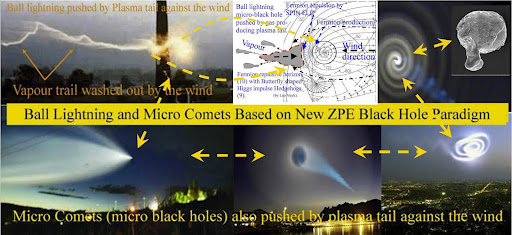According to Quantum FFF Theory,
1: black holes have lost all inertia related to the former imploded matter of the original star into a compact stringy nucleus, without spinning propeller shaped fermions and without Lorentz polarized atoms...
However, small black holes ( non primordial BHs) do produce hot plasma at their horizon, which seems to be able to stay away from the black hole by what I call Fermion repulsion of the propeller shaped stringy atomic matter (see image) based on Lorentz polarized Fermions.
2: Neutron stars have lost some of their inertia by the absence of a polarizable atomic polar rotational Quark system.
However Quark based Neutrons are supposed to have reduced Lorentz polarizable abilities, which is the reason that inertia of Quarks is assumed to be reduced.
As a consequence, we may assume that old primordial dark matter Black Holes also called Galaxy- Anchor Black Holes ( GABHs inside Globular clusters) do not produce plasma or hot gas, which is able to keep the internal Dark Matter Black Hole inside the globular cluster most of the inertia of the Atomic based star system.
In merging galaxies and galaxy clusters this phenomenon is assumed to be the origin of the peculiar shifting of hot gas and the dark matter light bending by lensing of the background observed in merging galaxy clusters.
(The former explanation is in contrast with the next suggestions made by Ethan Siegel)
Ethan Siegel in Forbes report:
"When your cluster is undisturbed, the gravitational effects are located where the matter is distributed. It's only after a collision or interaction has taken place that we see what appears to be a non-local effect. This indicates that something happens during the collision process to separate normal matter from where we see the gravitational effects. Adding dark matter makes this work, but non-local gravity would make differing before-and-after predictions that can't both match up, simultaneously, with what we observe."
https://www.forbes.com/sites/startswithabang/2017/11/09/the-bullet-cluster-proves-dark-matter-exists-but-not-for-the-reason-most-physicists-think/#d536bc41738c


















































